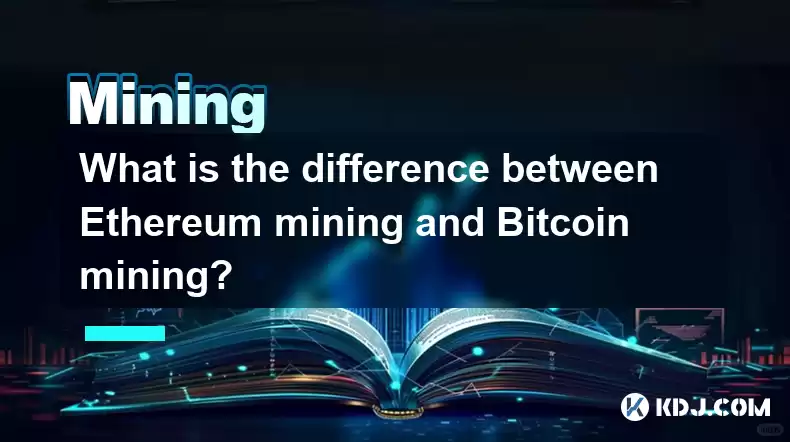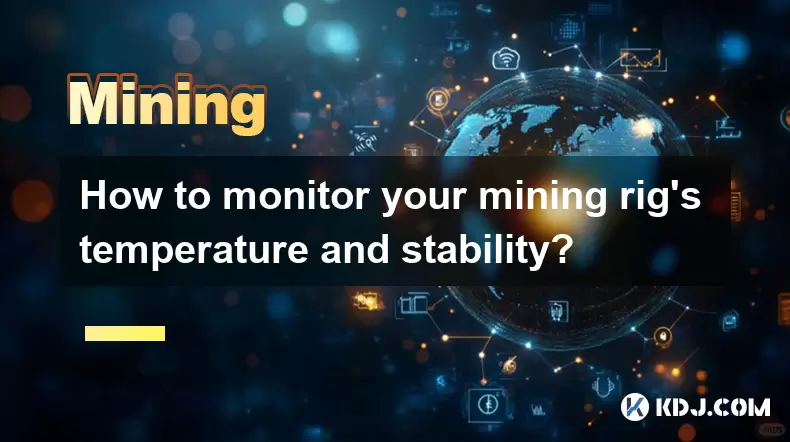-
 Bitcoin
Bitcoin $116800
0.20% -
 Ethereum
Ethereum $4192
5.51% -
 XRP
XRP $3.287
0.12% -
 Tether USDt
Tether USDt $1.000
0.00% -
 BNB
BNB $808.7
2.39% -
 Solana
Solana $180.4
2.23% -
 USDC
USDC $0.9999
0.01% -
 Dogecoin
Dogecoin $0.2390
6.80% -
 TRON
TRON $0.3365
-0.71% -
 Cardano
Cardano $0.8081
2.20% -
 Hyperliquid
Hyperliquid $43.74
6.50% -
 Chainlink
Chainlink $21.27
9.03% -
 Stellar
Stellar $0.4530
0.07% -
 Sui
Sui $3.908
3.00% -
 Bitcoin Cash
Bitcoin Cash $575.0
-1.02% -
 Hedera
Hedera $0.2632
0.61% -
 Avalanche
Avalanche $24.17
3.25% -
 Ethena USDe
Ethena USDe $1.001
0.02% -
 Litecoin
Litecoin $122.1
-0.24% -
 Toncoin
Toncoin $3.376
0.35% -
 UNUS SED LEO
UNUS SED LEO $8.981
-0.15% -
 Shiba Inu
Shiba Inu $0.00001373
5.86% -
 Uniswap
Uniswap $10.85
2.17% -
 Polkadot
Polkadot $4.080
4.03% -
 Dai
Dai $1.000
-0.02% -
 Pepe
Pepe $0.00001228
8.92% -
 Bitget Token
Bitget Token $4.506
0.09% -
 Cronos
Cronos $0.1581
3.76% -
 Monero
Monero $270.1
0.81% -
 Ethena
Ethena $0.7293
15.86%
What is the difference between Ethereum mining and Bitcoin mining?
Ethereum mining utilizes specialized GPUs and a complex algorithm, while Bitcoin mining predominantly employs ASICs due to their efficiency in verifying transactions and securing the network.
Feb 19, 2025 at 07:13 pm

Key Points:
- Ethereum mining focuses on solving complex computational problems to validate transactions and add new blocks to the Ethereum blockchain, while Bitcoin mining primarily involves verifying transactions and securing the network through solving hashing algorithms.
- Ethereum mining requires specialized hardware known as GPUs, while Bitcoin mining predominantly uses ASICs (Application-Specific Integrated Circuits) due to their energy efficiency and computational power.
- The rewards for mining Ethereum and Bitcoin vary based on factors such as block rewards, transaction fees, and network difficulty, and are subject to fluctuations in market conditions.
- Both Ethereum and Bitcoin mining processes consume significant energy, leading to discussions on their environmental impact and sustainability.
- The rise of alternative consensus mechanisms like Proof of Stake (PoS) has emerged as an energy-efficient alternative to traditional mining practices.
Ethereum Mining:
- Ethereum mining involves a complex process called Ethash, which is a memory-hard hashing algorithm designed to resist ASIC dominance.
- Ethereum miners utilize specialized Graphics Processing Units (GPUs) equipped with high-performance computing capabilities.
- The Ethash algorithm requires GPUs to perform complex calculations, making it more challenging and expensive to mine with ASICs.
- The reward for successfully mining an Ethereum block includes block rewards and transaction fees, which can vary depending on network activity and market demand.
- Ethereum miners operate within mining pools that combine their computational power to increase their chances of finding blocks and earning rewards.
Bitcoin Mining:
- Bitcoin mining revolves around the verification of transactions and securing the network through a consensus mechanism called Proof of Work (PoW).
- Bitcoin miners primarily use Application-Specific Integrated Circuits (ASICs) due to their optimized design and energy efficiency.
- ASICs are specifically designed to perform the SHA-256 hashing algorithm, which is the core mathematical computation involved in Bitcoin mining.
- The reward for mining a Bitcoin block includes block rewards, which are pre-determined and gradually decrease over time, and transaction fees.
- Bitcoin miners also function within mining pools to increase their computing power and the likelihood of finding blocks.
Energy Consumption and Sustainability:
- Both Ethereum and Bitcoin mining consume significant amounts of energy, primarily due to the intensive computational requirements of the mining process.
- The environmental impact of mining has raised concerns, leading to discussions on sustainability and the search for more energy-efficient alternatives.
- Some countries and regions have implemented regulations on cryptocurrency mining due to concerns over energy consumption and environmental implications.
Alternative Consensus Mechanisms:
- The emergence of alternative consensus mechanisms like Proof of Stake (PoS) has gained attention as a more energy-efficient alternative to traditional mining practices.
- PoS, as opposed to Proof of Work, does not require complex computational processes and instead relies on the amount of cryptocurrency staked by validators.
- Validators in PoS systems are responsible for validating transactions and adding new blocks to the blockchain, with the probability of a validator being selected based on their stake.
- PoS eliminates the need for energy-intensive mining processes, reducing the environmental impact associated with cryptocurrency transactions and network validation.
Frequently Asked Questions:
Q: Which cryptocurrency is more profitable to mine, Ethereum or Bitcoin?
A: The profitability of mining either Ethereum or Bitcoin depends on various factors such as market conditions, network difficulty, and hardware costs. While Bitcoin has a higher market value, Ethereum's faster block times and lower transaction fees may result in higher profitability for miners.
Q: Does Bitcoin mining require more energy than Ethereum mining?
A: Yes, Bitcoin mining typically consumes more energy compared to Ethereum mining. Bitcoin's SHA-256 hashing algorithm and the specialized ASIC hardware used result in a higher energy consumption rate per transaction.
Q: What are the long-term prospects for Ethereum mining?
A: The future of Ethereum mining remains uncertain. With the planned transition to Proof of Stake, the requirement for traditional mining may diminish significantly. However, Ethereum mining may still continue to play a role in securing the network during the transition.
Q: Is there a way to reduce the energy consumption associated with cryptocurrency mining?
A: Yes, using alternative consensus mechanisms like Proof of Stake (PoS) can significantly reduce the energy consumption required for cryptocurrency mining. PoS relies on staking cryptocurrency instead of energy-intensive computational processes.
Q: What is the role of mining pools?
A: Mining pools combine the computational power of multiple miners, increasing their chances of finding blocks and earning rewards. Miners contribute their computing resources to the pool and share the rewards earned based on their contribution.
Disclaimer:info@kdj.com
The information provided is not trading advice. kdj.com does not assume any responsibility for any investments made based on the information provided in this article. Cryptocurrencies are highly volatile and it is highly recommended that you invest with caution after thorough research!
If you believe that the content used on this website infringes your copyright, please contact us immediately (info@kdj.com) and we will delete it promptly.
- Crypto Airdrops & Opportunities: What's Hot in August 2025
- 2025-08-09 22:30:12
- XRP, Cardano, and the Alluring Alternatives: A 2025 Crypto Landscape
- 2025-08-09 22:35:12
- Shiba Inu (SHIB) in the Crypto Landscape: Community, Trends, and Future Outlook
- 2025-08-09 20:30:12
- Solana, Unilabs, and Social Trends: Decoding the Crypto Buzz
- 2025-08-09 21:10:12
- Dogecoin, Meme Coins, and Layer Brett: Chasing the Next 100x
- 2025-08-09 20:50:12
- Crypto Presales in 2025: Are They Set to Outperform Launches?
- 2025-08-09 20:55:15
Related knowledge

What is "proof-of-work" and how does it relate to mining?
Aug 07,2025 at 02:03pm
Understanding the Concept of Proof-of-WorkProof-of-work (PoW) is a consensus mechanism used in blockchain networks to validate transactions and secure...

What are the differences between mining on Windows vs. Linux?
Aug 06,2025 at 11:29pm
Overview of Cryptocurrency Mining PlatformsCryptocurrency mining involves using computational power to solve complex cryptographic puzzles and validat...

How to use an old computer for cryptocurrency mining?
Aug 07,2025 at 12:42pm
Understanding the Feasibility of Using an Old Computer for MiningUsing an old computer for cryptocurrency mining may seem outdated, but it is still te...

Can you mine cryptocurrency using solar power?
Aug 07,2025 at 12:00am
Understanding the Basics of Cryptocurrency MiningCryptocurrency mining involves validating transactions on a blockchain network by solving complex cry...

How to monitor your mining rig's temperature and stability?
Aug 09,2025 at 09:43am
Understanding the Importance of Temperature Monitoring in Mining RigsMaintaining optimal temperature levels in a mining rig is essential for long-term...

How to build a mining rig inside a PC case?
Aug 06,2025 at 11:01pm
Understanding the Basics of a Mining Rig in a PC CaseBuilding a mining rig inside a PC case involves transforming a standard computer chassis into a d...

What is "proof-of-work" and how does it relate to mining?
Aug 07,2025 at 02:03pm
Understanding the Concept of Proof-of-WorkProof-of-work (PoW) is a consensus mechanism used in blockchain networks to validate transactions and secure...

What are the differences between mining on Windows vs. Linux?
Aug 06,2025 at 11:29pm
Overview of Cryptocurrency Mining PlatformsCryptocurrency mining involves using computational power to solve complex cryptographic puzzles and validat...

How to use an old computer for cryptocurrency mining?
Aug 07,2025 at 12:42pm
Understanding the Feasibility of Using an Old Computer for MiningUsing an old computer for cryptocurrency mining may seem outdated, but it is still te...

Can you mine cryptocurrency using solar power?
Aug 07,2025 at 12:00am
Understanding the Basics of Cryptocurrency MiningCryptocurrency mining involves validating transactions on a blockchain network by solving complex cry...

How to monitor your mining rig's temperature and stability?
Aug 09,2025 at 09:43am
Understanding the Importance of Temperature Monitoring in Mining RigsMaintaining optimal temperature levels in a mining rig is essential for long-term...

How to build a mining rig inside a PC case?
Aug 06,2025 at 11:01pm
Understanding the Basics of a Mining Rig in a PC CaseBuilding a mining rig inside a PC case involves transforming a standard computer chassis into a d...
See all articles

























































































